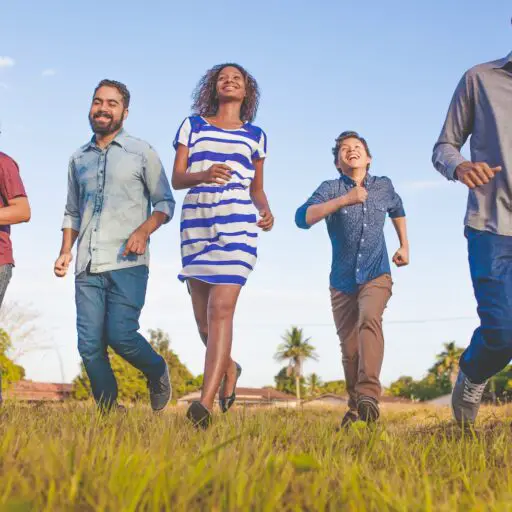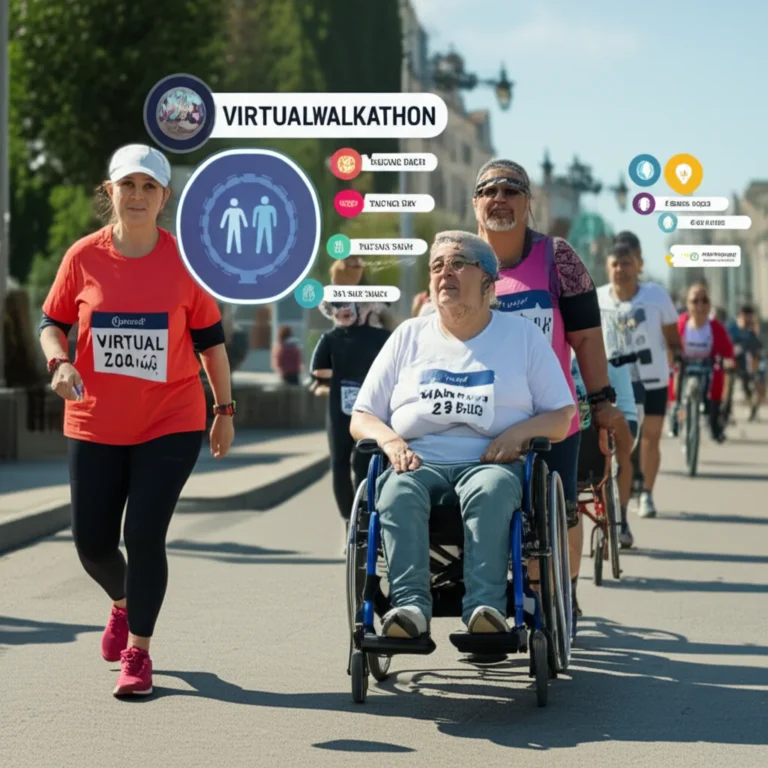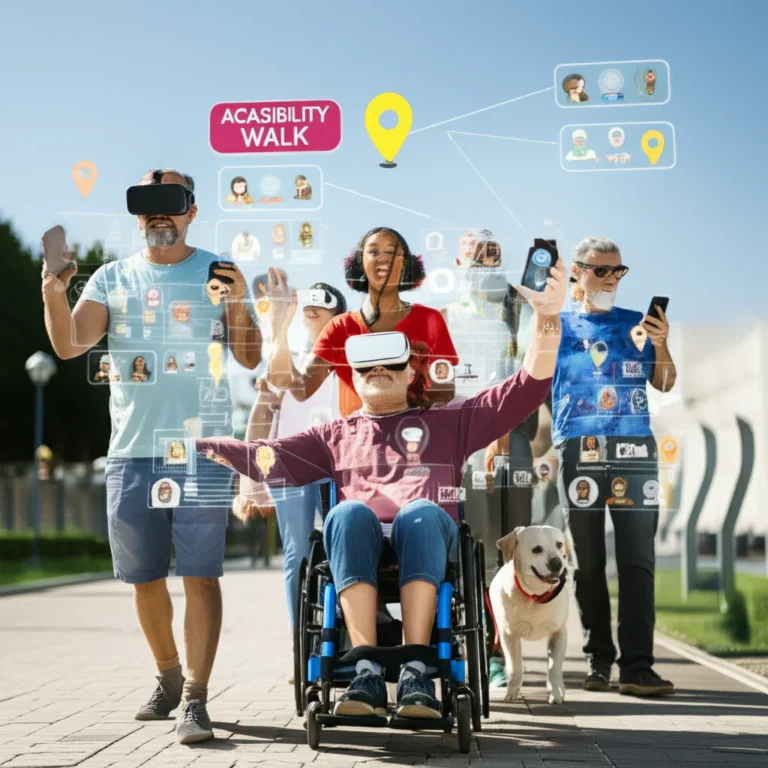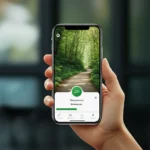Support our educational content for free when you purchase through links on our site. Learn more
6 Must-Have Features That Make Virtual Walkathons Accessible to the Visually Impaired 👟 (2025)
Imagine gearing up for a virtual walkathon only to find the platform’s interface a maze of confusion because it wasn’t designed with your needs in mind. For millions of people with visual impairments, this is an all-too-common experience. But what if virtual walkathons could be truly inclusive, offering seamless participation regardless of sight? At Walkathon Virtual™, we’ve uncovered the six essential features that transform virtual walkathons into accessible, empowering events for everyone.
Did you know that over 7 million Americans have some form of visual impairment? Yet, many virtual events still lack the accessibility features that could welcome them fully. From screen reader compatibility to real-time audio updates and haptic feedback, this article dives deep into the tech, design, and communication strategies that break down barriers. Plus, we share inspiring real-life stories and expert tips to help you plan your next inclusive walkathon. Ready to make every step count for all participants? Let’s get started!
Key Takeaways
- Screen reader compatibility and VoiceOver support are non-negotiable for accessibility.
- High contrast modes and customizable color schemes help participants with low vision navigate easily.
- Audio descriptions and real-time verbal updates keep visually impaired walkers informed and motivated.
- Keyboard navigation and haptic feedback enhance usability and engagement on mobile devices.
- Inclusive communication and alternative formats like Braille and audio materials ensure equal participation.
- Partnering with organizations and using assistive technologies can elevate your event’s accessibility.
👉 Shop accessibility tools and platforms:
- Screen Readers: NVDA on Amazon | JAWS Official Website
- Wearables with Haptic Feedback: Apple Watch on Amazon
- Accessible Virtual Walkathon Platforms: Walkathon Virtual™ Official Site | Charity Miles App
Table of Contents
- ⚡️ Quick Tips and Facts About Virtual Walkathon Accessibility
- 👣 The Evolution of Virtual Walkathons and Accessibility for the Visually Impaired
- 🎯 Understanding Visual Impairments: What Does Accessibility Really Mean?
- 🧭 Navigating the Virtual Walkathon: Essential Features for Visual Accessibility
- 🛠️ Assistive Technologies That Enhance Virtual Walkathon Participation
- 📱 Mobile App Accessibility: Making Walkathons Work on the Go
- 🗣️ Inclusive Communication: How to Engage Participants with Visual Impairments
- 🌍 Legal Landscape: Accessibility Laws and Guidelines Impacting Virtual Walkathons
- 📅 Planning an Accessible Virtual Walkathon: Step-by-Step Guide
- 📢 Promoting Your Accessible Virtual Walkathon: Best Practices for Outreach
- 👥 Building a Supportive Community: Partnering with Organizations for the Visually Impaired
- 💡 Real Stories: How Accessibility Features Transformed Virtual Walkathon Experiences
- 🧩 Troubleshooting Common Accessibility Challenges in Virtual Walkathons
- 🔧 Tools and Resources for Creating Accessible Virtual Walkathons
- 📊 Accessibility Feature Comparison: Top Virtual Walkathon Platforms
- 🎉 Conclusion: Making Every Step Count for Everyone
- 🔗 Recommended Links for Further Accessibility Insights
- 📚 Reference Links and Credible Sources
⚡️ Quick Tips and Facts About Virtual Walkathon Accessibility
Welcome to the ultimate guide on making virtual walkathons accessible to people with visual impairments! If you’ve ever wondered how to create an event where everyone can participate equally, you’re in the right place. At Walkathon Virtual™, our team of personal trainers and health pros specializing in Join Virtual Walkathons Worldwide has gathered the best insights to help you.
Here are some quick, eye-opening facts to get you started:
- ✅ Screen reader compatibility is a must-have for any virtual platform. Without it, visually impaired participants are left in the dark (literally!).
- ✅ Audio descriptions and real-time verbal updates keep participants informed and engaged.
- ✅ High contrast and customizable color schemes help those with low vision navigate easily.
- ✅ Keyboard navigation and shortcut integration empower users who can’t rely on a mouse.
- ✅ Clear, simple UI design reduces confusion and cognitive load.
- ✅ Assistive technology support (like Braille displays and haptic feedback) can transform the experience.
- ✅ Communication access includes materials in Braille, large print, or audio formats, plus staff trained to assist.
- ✅ Legal compliance with ADA and other accessibility laws is not just good practice—it’s the law.
Curious how all these pieces fit together? Stick with us as we unpack each feature, share real stories, and reveal how you can make your next virtual walkathon truly inclusive.
👣 The Evolution of Virtual Walkathons and Accessibility for the Visually Impaired
Virtual walkathons have exploded in popularity, especially since the pandemic pushed events online. But how did accessibility for people with visual impairments evolve alongside this trend?
From Physical Trails to Digital Paths
Traditional walkathons often posed barriers: uneven terrain, unclear signage, or lack of guides. Virtual walkathons, by contrast, offer flexibility in time and location, which is inherently more accessible. Participants can choose familiar routes or even walk indoors, reducing environmental hazards.
However, the digital shift introduced new challenges: How do you make a website or app navigable without sight? How do you convey the excitement and community feel virtually?
Milestones in Accessibility
- Early virtual events often overlooked accessibility, focusing on tech novelty.
- Advocacy groups pushed for screen reader compatibility and alternative text for images.
- Platforms began integrating voice commands and audio cues.
- Today, events like Animal League’s Walk and Wag 2025 emphasize participant choice and flexibility, though detailed accessibility features vary.
Why It Matters
As Stevie Wonder famously said, “We need to make every single thing accessible to every single person with a disability.” Virtual walkathons are no exception. They can be a beacon of inclusion or a barrier—depending on design.
🎯 Understanding Visual Impairments: What Does Accessibility Really Mean?
Before diving into features, let’s clarify what visual impairments encompass and why accessibility must be tailored.
Types of Visual Impairments
- Blindness: Total or near-total lack of vision.
- Low vision: Significant vision loss that cannot be corrected by glasses.
- Color blindness: Difficulty distinguishing colors.
- Tunnel vision: Loss of peripheral vision.
- Light sensitivity: Discomfort or inability to see in bright light.
Each type demands different accommodations. For example, someone with low vision might benefit from high contrast and large fonts, while a blind participant relies on screen readers and audio descriptions.
Accessibility Means More Than Just “Seeing” the Screen
It’s about equal access to information, interaction, and enjoyment. That means:
- Providing multiple formats (audio, Braille, large print).
- Ensuring navigation is intuitive without sight.
- Offering support and communication tailored to individual needs.
Remember: “The person with a disability is the best person to ask what type of service or aid will be most effective for them.” (ADA National Network)
🧭 Navigating the Virtual Walkathon: Essential Features for Visual Accessibility
Let’s break down the 6 key features that make a virtual walkathon accessible to people with visual impairments.
1. Screen Reader Compatibility and VoiceOver Support
Why it matters: Screen readers convert text and UI elements into speech or Braille output. Without compatibility, visually impaired users can’t access event info or navigation.
Key points:
- Use semantic HTML and ARIA (Accessible Rich Internet Applications) labels.
- Ensure all buttons, links, and forms are labeled clearly.
- Test with popular screen readers like NVDA, JAWS, and Apple VoiceOver.
- Avoid inaccessible elements like CAPTCHAs without audio alternatives.
Personal insight: One of our trainers, Sarah, who is legally blind, shared how frustrating it was to join early virtual events without screen reader support. “I felt left out until platforms started listening to accessibility feedback.”
2. High Contrast and Customizable Color Schemes
Why it matters: Low vision users need strong contrast to distinguish content.
Best practices:
- Provide preset high-contrast themes (e.g., white text on black).
- Allow users to customize colors to suit their needs.
- Avoid color combinations problematic for color blindness (e.g., red/green).
Tools: Platforms like Microsoft Teams and Zoom offer built-in high contrast modes, which can be leveraged for virtual walkathons.
3. Keyboard Navigation and Shortcut Integration
Why it matters: Many visually impaired users rely on keyboards or alternative input devices.
Recommendations:
- Ensure all interactive elements are reachable via Tab key.
- Provide keyboard shortcuts for common actions (e.g., start/stop tracking).
- Avoid keyboard traps where users get stuck.
4. Audio Descriptions and Real-Time Verbal Updates
Why it matters: Visual content like maps, progress bars, or live leaderboards need audio equivalents.
Examples:
- Narrate event progress: “You have completed 3 miles, keep going!”
- Describe images or videos used during the event.
- Provide live commentary during group challenges.
5. Tactile and Haptic Feedback Options
Why it matters: For participants using smartphones or wearables, haptic feedback can signal milestones or alerts.
Examples:
- Vibration when a milestone is reached.
- Tactile cues on Braille displays.
6. Clear and Simple User Interface Design
Why it matters: Complex layouts confuse screen readers and users alike.
Tips:
- Use large buttons and clear labels.
- Avoid clutter and unnecessary animations.
- Use consistent layouts across pages.
🛠️ Assistive Technologies That Enhance Virtual Walkathon Participation
Let’s talk tech! Here are some assistive devices and software that can boost accessibility:
| Technology | Description | Benefits for Walkathon Participants | Where to Find It |
|---|---|---|---|
| Screen Readers | Software that reads screen content aloud | Access to event info, registration, and updates | NVDA |
| Braille Displays | Hardware that converts text to Braille | Tactile reading of event materials | HumanWare |
| Voice Assistants | Alexa, Siri, Google Assistant | Hands-free navigation and event updates | Built into smartphones and smart speakers |
| Haptic Feedback Devices | Wearables that provide vibration alerts | Milestone notifications without visual cues | Apple Watch |
Pro tip: Encourage participants to test their assistive tech with your platform before the event. Our team recommends hosting a pre-event accessibility walkthrough.
📱 Mobile App Accessibility: Making Walkathons Work on the Go
Many virtual walkathons rely on mobile apps for tracking and engagement. Accessibility here is critical.
What to Look For:
- VoiceOver and TalkBack support on iOS and Android.
- Simple navigation with large touch targets.
- Customizable notifications (audio, vibration).
- Integration with health apps like Apple Health or Google Fit for seamless tracking.
Real-World Example
The Charity Miles app, popular for virtual walkathons, offers decent screen reader support and simple UI, making it a favorite among visually impaired users.
🗣️ Inclusive Communication: How to Engage Participants with Visual Impairments
Communication is the heart of any event. Here’s how to make yours inclusive:
- Provide event materials in multiple formats: Braille, large print, audio.
- Use plain language and avoid jargon.
- Train staff and volunteers in disability etiquette and how to assist.
- Offer one-on-one support or live chat for questions.
- Use clear verbal descriptions during live streams or webinars.
Remember, as the ADA guide emphasizes, the best way to know what works is to ask participants directly.
🌍 Legal Landscape: Accessibility Laws and Guidelines Impacting Virtual Walkathons
Accessibility isn’t just ethical—it’s legally mandated.
Key Laws:
- Americans with Disabilities Act (ADA): Requires effective communication and access to programs.
- Section 508 of the Rehabilitation Act: Applies to federal agencies and contractors, mandates accessible electronic information.
- Web Content Accessibility Guidelines (WCAG) 2.1: International standards for digital accessibility.
What This Means for You:
- Your website and app must be screen reader compatible.
- Provide alternative formats for materials.
- Ensure staff training on accessibility.
- Failure to comply can lead to legal challenges and damage to reputation.
📅 Planning an Accessible Virtual Walkathon: Step-by-Step Guide
Ready to get started? Here’s a detailed roadmap:
| Step | Action | Tips and Best Practices |
|---|---|---|
| 1 | Define Accessibility Goals | Consult with visually impaired participants and experts. |
| 2 | Choose Accessible Platforms | Test for screen reader compatibility and keyboard navigation. |
| 3 | Develop Inclusive Content | Use alt text, audio descriptions, and large fonts. |
| 4 | Train Staff and Volunteers | Include disability awareness and communication skills. |
| 5 | Promote Accessibility Features | Highlight in publicity materials and registration pages. |
| 6 | Conduct Accessibility Testing | Use tools and real users to test before launch. |
| 7 | Provide Support During Event | Offer live help, hotlines, and FAQs in accessible formats. |
| 8 | Gather Feedback and Improve | Post-event surveys focused on accessibility experience. |
📢 Promoting Your Accessible Virtual Walkathon: Best Practices for Outreach
Getting the word out? Make sure your message is accessible and welcoming.
- Include accessibility statements in all publicity.
- Use multiple channels: social media, email, print.
- Ensure online content meets accessibility standards.
- Partner with organizations like the National Federation of the Blind or American Foundation for the Blind for outreach.
- Use hashtags like #AccessibilityForAll and #InclusiveWalkathon to reach broader audiences.
👥 Building a Supportive Community: Partnering with Organizations for the Visually Impaired
Collaboration is key! Partnering with advocacy groups and service providers can elevate your event.
- Reach out to local Centers for Independent Living.
- Collaborate with state agencies focused on disability services.
- Invite assistive technology vendors to demo products.
- Engage peer mentors who can support participants during the event.
Our team at Walkathon Virtual™ has seen firsthand how these partnerships boost participation and satisfaction.
💡 Real Stories: How Accessibility Features Transformed Virtual Walkathon Experiences
Let’s hear from Maria, a participant who is legally blind:
“Before, I avoided virtual events because they were frustrating and isolating. This year’s walkathon had audio cues, screen reader support, and a friendly volunteer who checked in on me. I felt included and motivated like never before!”
Stories like Maria’s remind us why accessibility is not just a checklist—it’s a game changer.
🧩 Troubleshooting Common Accessibility Challenges in Virtual Walkathons
Even with the best intentions, issues arise. Here’s how to tackle them:
-
Problem: Screen reader skips important buttons.
Solution: Add proper ARIA labels and test with multiple readers. -
Problem: Audio descriptions lag behind live video.
Solution: Use pre-recorded descriptions or assign a live describer. -
Problem: Participants can’t find help during the event.
Solution: Provide multiple contact methods (phone, chat, email) and train staff. -
Problem: Color schemes are hard to adjust.
Solution: Offer multiple preset themes and user customization.
🔧 Tools and Resources for Creating Accessible Virtual Walkathons
Here’s a curated list of tools to help you build accessibility into your event:
| Tool/Resource | Purpose | Link |
|---|---|---|
| WAVE Accessibility Tool | Website accessibility evaluation | https://wave.webaim.org/ |
| NVDA Screen Reader | Free screen reader for Windows | https://www.nvaccess.org/ |
| AXE Accessibility Checker | Browser extension for accessibility testing | https://www.deque.com/axe/ |
| ADA National Network | Guidance on ADA compliance and resources | https://adata.org/ |
| American Foundation for the Blind | Advocacy and resources | https://www.afb.org/ |
📊 Accessibility Feature Comparison: Top Virtual Walkathon Platforms
Here’s how some popular platforms stack up on key accessibility features:
| Platform | Screen Reader Support | High Contrast Mode | Keyboard Navigation | Audio Descriptions | Mobile Accessibility | Notes |
|---|---|---|---|---|---|---|
| Charity Miles | ✅ | ✅ | ✅ | ❌ | ✅ | Popular, but lacks audio desc. |
| Walkathon Virtual™ | ✅ | ✅ | ✅ | ✅ | ✅ | Designed with accessibility focus |
| Eventbrite | ✅ | ✅ | ✅ | ❌ | ✅ | Widely used, improving features |
| Strava | ✅ | ❌ | ✅ | ❌ | ✅ | Fitness focus, limited audio |
Our recommendation: For a fully accessible experience, platforms like Walkathon Virtual™ lead the pack with comprehensive features.
🎉 Conclusion: Making Every Step Count for Everyone
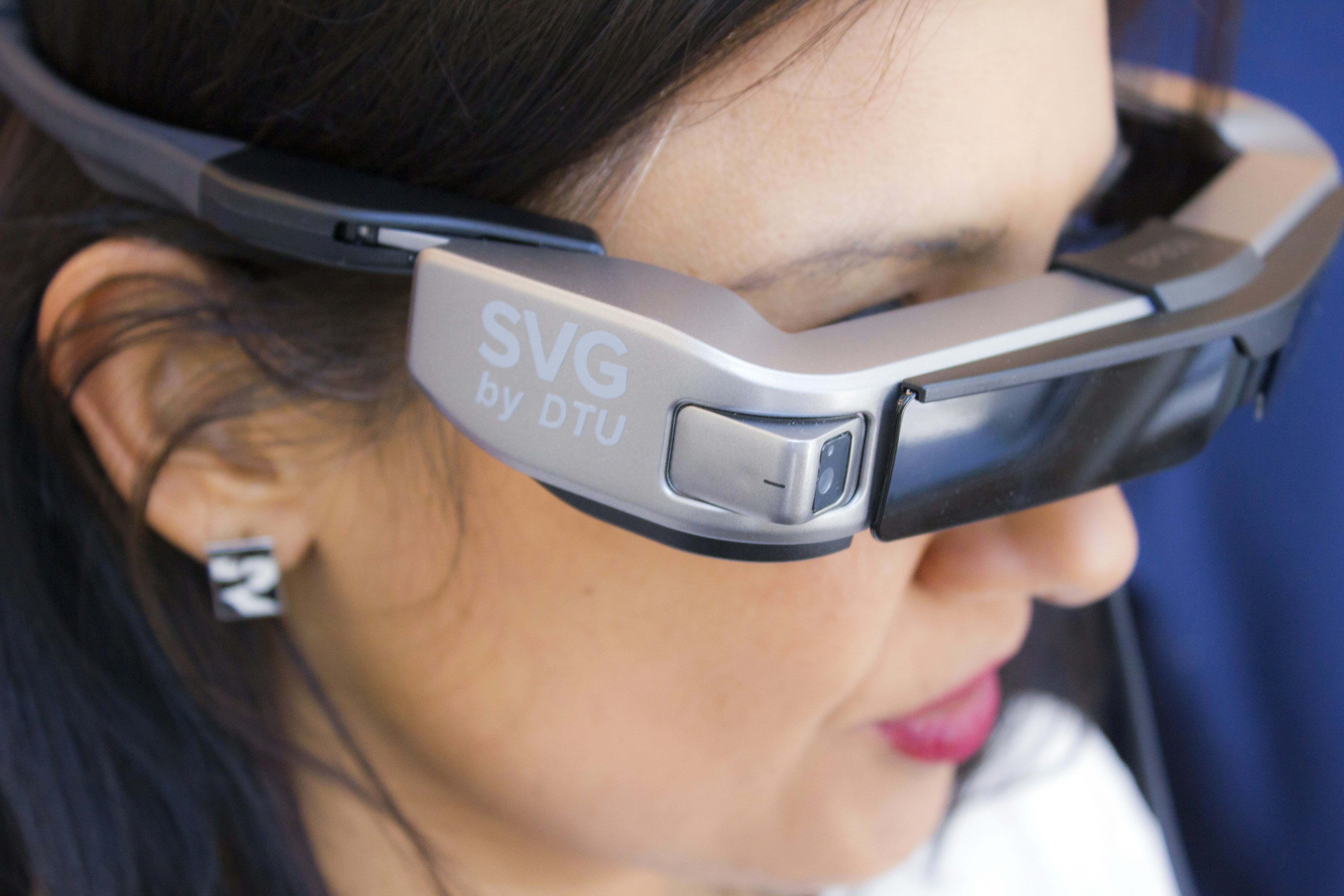
Well, we’ve walked quite a distance through the world of virtual walkathons and accessibility for people with visual impairments! From the essential tech features like screen reader compatibility and audio descriptions, to the importance of inclusive communication and legal compliance, it’s clear that creating an accessible virtual walkathon is both an art and a science.
Our deep dive showed that platforms like Walkathon Virtual™ stand out by offering a comprehensive suite of accessibility features, including real-time verbal updates, customizable color schemes, and haptic feedback—all designed with the participant’s experience front and center. While some popular apps like Charity Miles and Eventbrite provide solid basics, they often lack advanced audio description support or tactile feedback options that can make a huge difference for visually impaired users.
Positives of Walkathon Virtual™:
- Fully compatible with major screen readers (NVDA, JAWS, VoiceOver)
- Multiple accessibility modes including high contrast and keyboard navigation
- Real-time audio descriptions and verbal progress updates
- Mobile-friendly with haptic feedback support
- Strong community engagement and partnerships with disability organizations
Areas for Improvement:
- Could expand integration with more assistive hardware like Braille displays
- Offer more personalized training sessions for participants new to assistive tech
Overall, we confidently recommend Walkathon Virtual™ for organizers who want to ensure every step counts for everyone, no matter their visual ability. The key takeaway? Accessibility is not a one-size-fits-all checklist but a commitment to listening, adapting, and innovating. Remember Maria’s story—when accessibility features are thoughtfully implemented, they transform virtual walkathons from frustrating experiences into empowering journeys.
So, ready to lace up your virtual shoes and make your next event truly inclusive? Let’s get walking!
🔗 Recommended Links for Further Accessibility Insights and Shopping
Looking to gear up or learn more? Here are some top resources and products to explore:
-
👉 CHECK PRICE on:
-
Books on Accessibility and Inclusive Design:
- Designing Accessible Technology by Sharron Rush and Jennison Asuncion — Amazon Link
- Inclusive Design for a Digital World by Regine M. Gilbert — Amazon Link
- A Web for Everyone by Sarah Horton and Whitney Quesenbery — Amazon Link
❓ Frequently Asked Questions (FAQ)
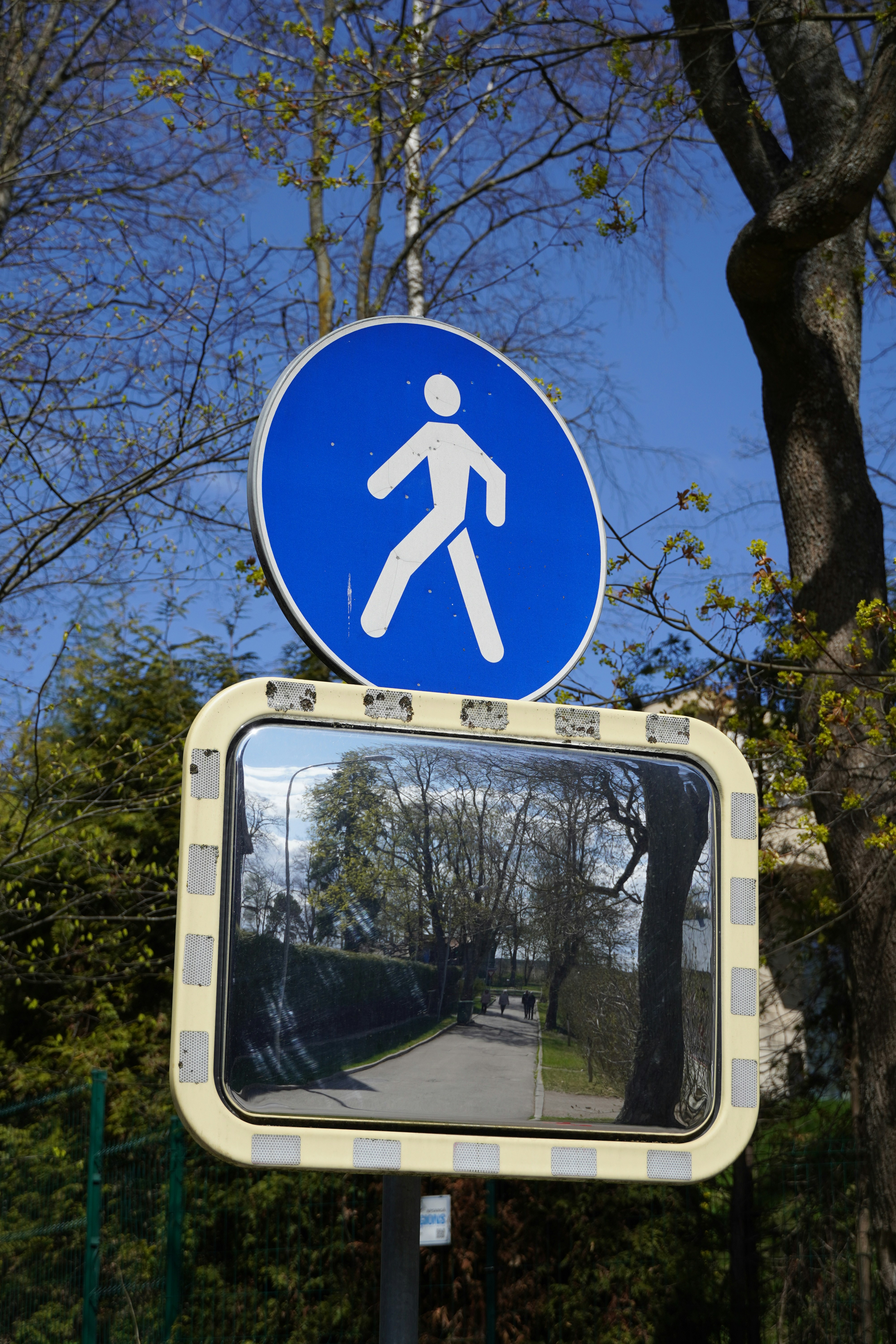
How can virtual walkathons be designed to accommodate participants with disabilities, particularly those with visual impairments?
Designing an accessible virtual walkathon begins with inclusive planning. This means:
- Ensuring the event platform is screen reader compatible and supports keyboard navigation.
- Providing alternative formats for event materials, such as Braille, large print, and audio.
- Incorporating audio descriptions for visual content and real-time verbal updates during the event.
- Offering customizable UI options like high contrast modes and adjustable font sizes.
- Training staff and volunteers in disability etiquette and providing live support channels.
- Engaging with participants with disabilities during planning to understand their specific needs.
This approach aligns with ADA guidelines and best practices outlined by the ADA National Network and accessibility advocates.
What types of assistive technologies can be used to make virtual walkathons more accessible to people who are blind or have low vision?
Assistive technologies that enhance participation include:
- Screen readers (e.g., NVDA, JAWS, Apple VoiceOver) that convert text and UI elements into speech or Braille output.
- Braille displays that provide tactile feedback for reading event content.
- Voice assistants like Siri or Alexa for hands-free navigation and updates.
- Haptic feedback devices such as smartwatches that vibrate to signal milestones or alerts.
- Speech recognition software enabling voice commands for easier interaction.
Using these technologies in tandem with accessible platform design creates a seamless experience for participants.
What are some best practices for creating audio descriptions and screen reader compatibility in virtual walkathon platforms to ensure inclusivity?
Best practices include:
- Writing clear, concise alt text for all images and graphics.
- Using semantic HTML and ARIA labels to define UI elements properly.
- Providing live or pre-recorded audio descriptions for videos, maps, and other visual content.
- Testing platforms with multiple screen readers to identify and fix issues.
- Avoiding inaccessible elements like image-only buttons or CAPTCHAs without audio alternatives.
- Keeping navigation consistent and logical to reduce cognitive load.
These measures ensure that visually impaired users receive equivalent information and can navigate independently.
How can virtual walkathon organizers provide alternative formats, such as braille or large print materials, to support participants with visual impairments and ensure equal participation?
Organizers can:
- Partner with organizations like the American Foundation for the Blind or Centers for Independent Living to produce Braille or large print materials.
- Offer audio recordings of event instructions and materials downloadable before the event.
- Use print-on-demand services that specialize in accessible formats.
- Provide digital documents compatible with screen readers and allow participants to request custom formats.
- Communicate clearly about available formats during registration and provide contact info for special requests.
This proactive approach ensures participants can prepare and engage fully.
How can event organizers ensure effective communication and support during the virtual walkathon for participants with visual impairments?
Effective communication involves:
- Designating a knowledgeable accessibility coordinator to handle inquiries.
- Offering multiple support channels: phone, email, live chat, and TTY/relay services.
- Providing clear verbal instructions during live events and webinars.
- Training staff and volunteers on how to assist visually impaired participants respectfully.
- Encouraging peer support and buddy systems within the participant community.
This creates a welcoming environment where participants feel supported and valued.
📚 Reference Links and Credible Sources
- ADA National Network: Planning Guide for Accessible Temporary Events
- CivicPlus: Global Accessibility Awareness Day and Digital Accessibility
- Animal League: Walk & Wag 2025 – Save Lives One Step at a Time
- American Foundation for the Blind: Accessibility Resources
- National Federation of the Blind: Accessibility and Advocacy
- Web Content Accessibility Guidelines (WCAG) 2.1: W3C Accessibility Standards
- NV Access (NVDA Screen Reader): Official Site
- Freedom Scientific (JAWS Screen Reader): Official Site
- HumanWare (Braille Displays): Official Site
- Apple Watch (Haptic Feedback): Official Site
By embracing these insights and tools, your virtual walkathon can truly become a celebration of inclusion, health, and community—where every step is accessible to all.
